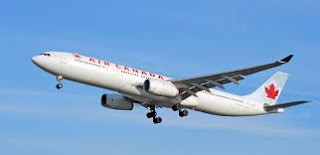After a week in Belgium, mom is coming home tomorrow. I'm purring in anticipation. Dieter took good care of us cats, but the place wasn't the same without her.
The last time mom went to Belgium was for the funeral of her mother and she came home with a cat ... Mickey.
In the following, mom tells the story of how Mickey come to us.
When my mother died and my father applied to go into a nursing home, a new home had to be found for Mickey, their ten month old cat. It was not easy. If Mickey had been a kitten he might have had a chance, but as a fully grown cat, nobody was willing to give him a new home.
Taking my parent's beloved cat to a shelter was, as far as I was concerned, not an option. There was only thing left to do; I decided to take him back with me to Canada.
My research brought a few surprises.
I started off by phoning KLM and asking them a few questions:
Would I be able to keep Mickey with me in the plane or would he be traveling in the cargo space?
What sort of carrier was required?
If Mickey traveled in the cargo space, would there be heating and was there some kind of supervision?
The representative asked me some questions:
How heavy was Mickey?
In what sort of carrier would he be traveling?
Mickey, I told her, was about five pounds and had a spacious hard plastic carrier. This qualified him to travel in the cargo space.
In the cargo space there would be suitable air pressure, heating and some supervision. One of the flight attendants would check up on the animals during flight.
The only time an animal qualifies to travel with the other passengers is when the animal is less than 2.5 pounds and travels in a soft carrier. In Mickey's case this would not be a good idea. He would be much more comfortable in his spacious carrier, where he could stretch out and sleep in peace and quiet.
One last question was if Mickey would need any sedatives on the day of the journey. "No," I was told, "sedatives do more harm than good with a cat. Dogs need sedatives when traveling, but cats can handle a plane journey very well."
To be on the safe side I decided to get a second opinion and phoned a veterinarian. She told me exactly the same thing as the KLM representative. Mickey did not need any medication.
Next I checked his passport. To my relief I saw entries required by law- inoculations and a Rabies shot.
On the day of the journey I placed some food, a bottle of water, and two plastic containers in his carrier and we were all set to go. I was in for a bit of an adventure. Lugging around the airport with a suitcase (on wheels), a heavy bag, and a cat carrier was not exactly a walk in the park.
Still, at Schiphol, Amsterdam's airport, I found a trolley where I could load my suitcase, bag and carrier and this set of wheels made the walking and standing in line at the luggage check-in a lot more comfortable.
Once my suitcases were off my hands it was time to send Mickey on his merry way. For this I had to be at another counter where a KLM representative took Mickey's details and prepared the carrier with safety handling instructions.
"Not to worry," she told me. "Mickey will be well looked after." And, he must have been, because when we landed at Pearson's airport in Toronto, Mickey appeared completely relaxed. I, on the other hand, was not quite so relaxed.
Once again I was lugging around a suitcase, a bag and a heavy cat carrier, but without a helpful trolley. Suitcase trolleys were available, but required $1 for use. I didn't have $1. I had plenty of Euros, but no Canadian dollars.
Hot and sweaty I went through passport control and was then asked to present Mickey at "Live Animal Control" for inspection. Lucky this didn't take long and required no effort.
Mickey was healthy and alert and with his passport in order, he was let into the country with no problems.
Mickey was, at last, on his way to his new home.
More of mom's articles can be found at
http://www.helium.com/users/edit_show_articles/380634






